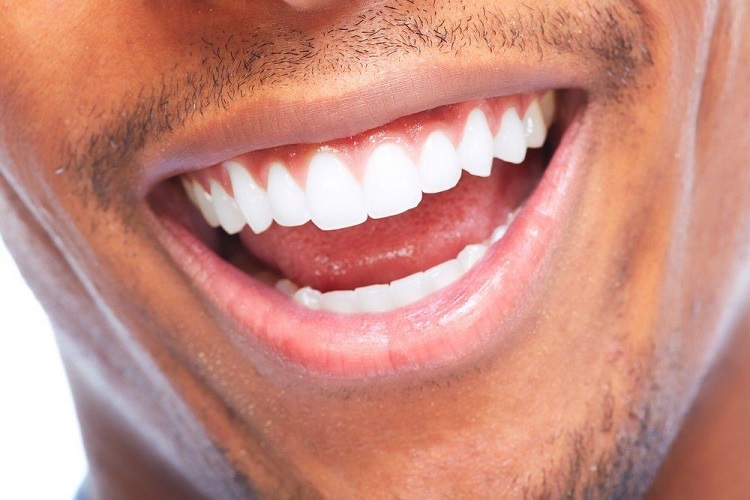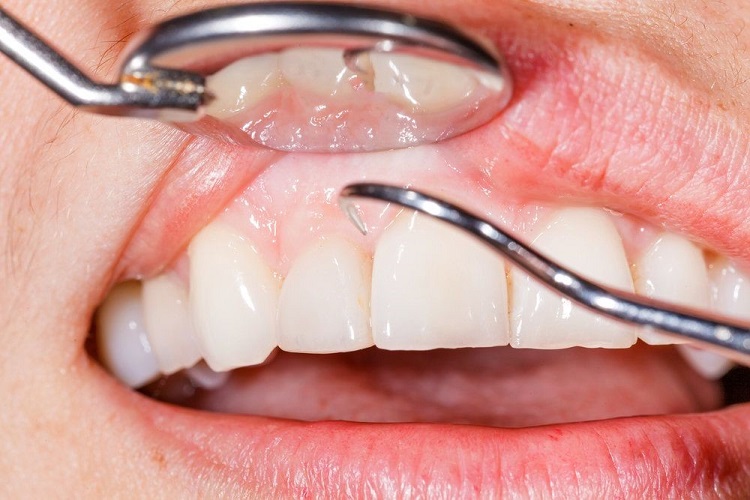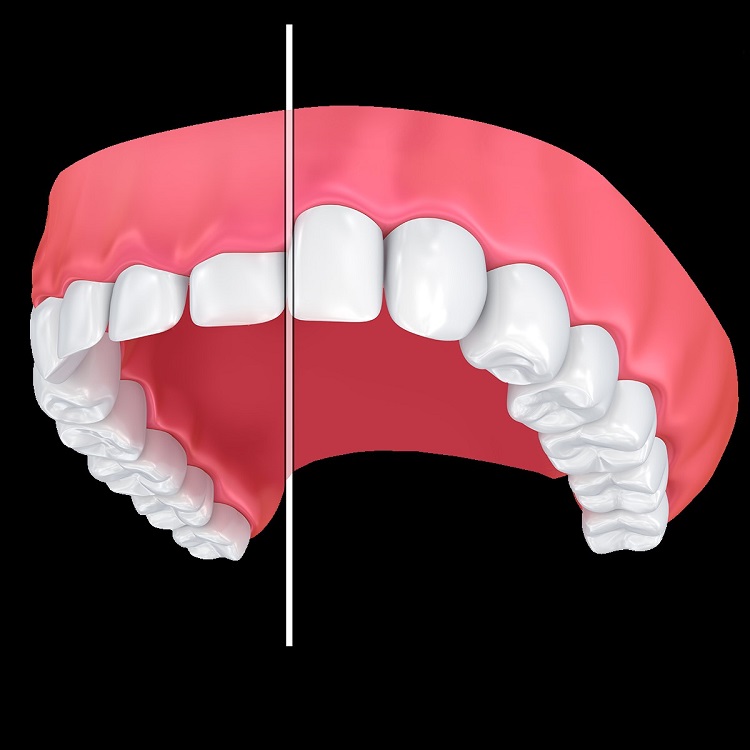Everyone’s gumlines are different. Some are high, some are low, and some are in between. Some may even be uneven.
If you feel self-conscious about your gumline, there are ways to change it. Gum contouring, also known as gingival sculpting or gingivoplasty, is one of the options that can help reshape your gumline.
What Causes Uneven Gums?
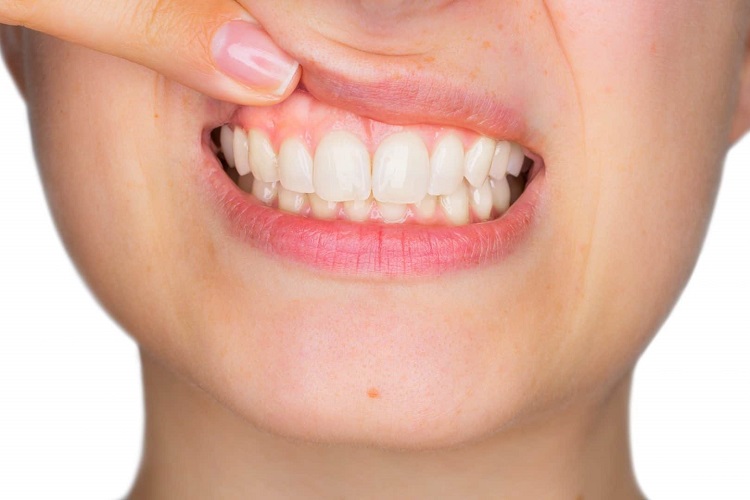
Gums that are too high and make your teeth appear long are often caused by gum recession, a condition in which gum tissue pulls back from a tooth and exposes the tooth’s root. Not only can gum recession make your teeth look long, it can lead to serious dental problems such as decay and tooth loss. Gum recession may also be a sign of periodontal disease, the deterioration of the supporting structures of the teeth (gums and bone).
What is gum contouring?
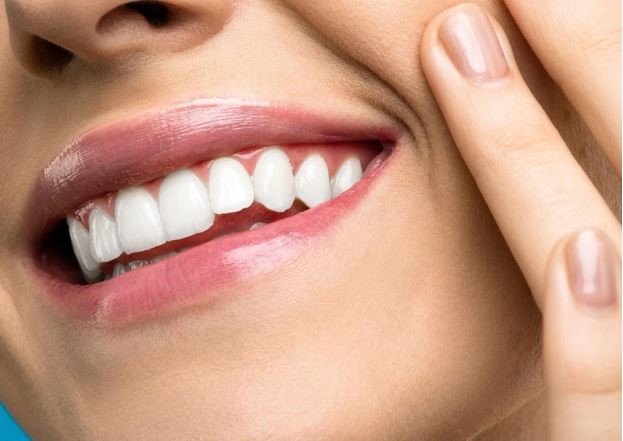
Uses of Gum Contouring
Gum contouring is frequently used for one of two purposes. One of the most common is to trim excess gum tissue that creates the appearance of a “gummy” smile. Excess gum tissue can make the teeth appear disproportionately small. By removing this excess tissue, your oral surgeon can create a more proportionate and natural-looking smile. Another use of gum contouring is to create a more even gum line because uneven gum tissue can make teeth appear crooked or misshapen. Using precise tools and techniques, the doctor can create a more symmetrical, scalloped gum line. Gum reshaping is also sometimes used in conjunction with other procedures, such as the placement of a dental crown, or in combination with other cosmetic procedures.
When is it medically necessary?
Many times, gum contouring is done for cosmetic purposes. But there are times when it may be a medical necessity.
If you have periodontal disease, gum contouring may be a treatment option. But your dentist will first try to treat the gum disease with nonsurgical options. This may include antibiotics to kill the bacteria and infection, or dental cleanings to restore gum health.
If these efforts don’t work, your dentist may recommend a treatment such as pocket reduction surgery on the gums and surrounding bone to save a tooth. Or you may need a regeneration procedure to regrow damaged bone and gum tissue.
Gum contouring might be part of these procedures. And if so, dental insurance may cover the cost, or part of it, if it’s deemed a medical necessity. You’ll need to speak with your dental insurance provider to find out what’s covered and if there are out-of-pocket expenses.
Gum contouring procedure
Step 1: Indication of new gum line
Your dentist will first draw a line indicating your new gum line.
The line shows how your gums will be reshaped or how much gum will be removed.
Step 2: Anaesthetic injection
After this, your gums will be numbed with local anaesthetic.
Step 3: Gum contouring
Depending on the proportion of your gum to teeth, patients with gummy smiles will have excess gum removed while patients with receding gum will have gum tissue added to exposed areas.
Is there pain associated with the procedure?
There can be, but you will be medicated during the procedure, which will reduce the likelihood of you feeling any pain. The amount of pain really depends on how much gum tissue is being cut away, shaped, or grafted. Additionally, the type of dental tools in the procedure will impact what your gums feel like afterward. Currently, dentists are using both scalpels and lasers to complete gum procedures.
Recovery
The day of surgery, you should rest and limit your activities. It may take a few days or weeks for your gums to heal completely. Your dentist will give you specific directions about what you need to do to aid the recovery process. Here are some general tips to get you through the recovery period:
- Ease pain by taking an over-the-counter pain reliever, such as Tylenol or Advil, as directed by your dentist. Do not take aspirin, which can cause bleeding.
- Eat soft, cool foods, such as eggs, pasta, yogurt, cottage cheese, soft vegetables, and ice cream, for the first few days after surgery. Avoid spicy foods and anything with seeds until your gums have healed completely.
- Follow your dentist’s directions on when and how to brush your teeth during the healing process.
If you notice excessive swelling or bleeding, or if you have any concerns following the procedure, call your dentist.
Risks
You could get an infection or have a bad reaction to the anesthesia. If you have had surgery and anesthesia before, it is unlikely that you will have a bad reaction this time. Simultaneously, if you follow the aftercare instructions, your risk for infection will go down significantly.
Costs
Gum contouring is often done for cosmetic reasons, which makes it an elective procedure — meaning it isn’t medically necessary. For this reason, dental insurance typically doesn’t cover the cost.
If not medically necessary, you’ll pay for the procedure out of pocket. The cost will vary depending on the amount of gum tissue removed or restored, and whether a specialist performs the procedure.
FAQs
Is gum shaping different from gum contouring?
These terms are used interchangeably by dentists who perform them. Some may use contouring to describe the procedure with the use of a scalpel and reshaping when lasers are used. At the end of the day, the approach and objective are very similar. It is the tools that are different. The key is that if you want your gums to look different, it doesn’t really matter which term is used, both contouring and reshaping can be an excellent solution.
How do I know if I need gum contouring?
Typically, this is a highly personal decision that is made based on how you feel about your gums. If your gums are uneven, or they cover too much or too little of your teeth, then you may be a good candidate for gum contouring or gum reshaping.
How long is recovery?
Gum contouring involves little downtime, but complete healing might take days or weeks, depending on the extent of the surgery.

